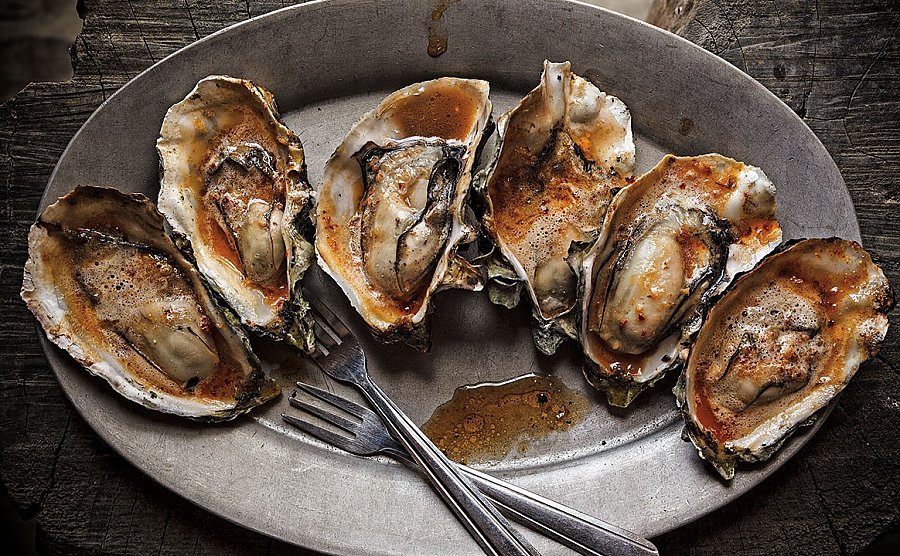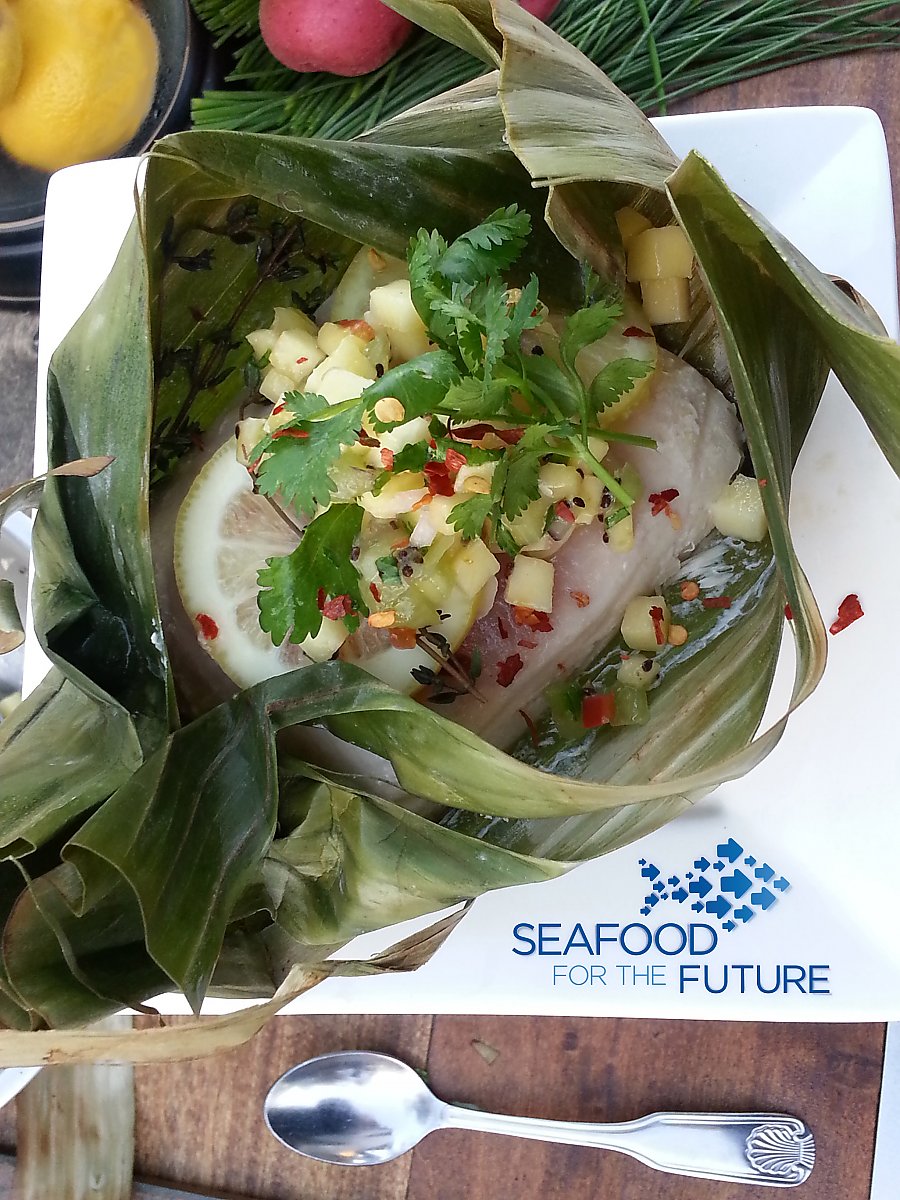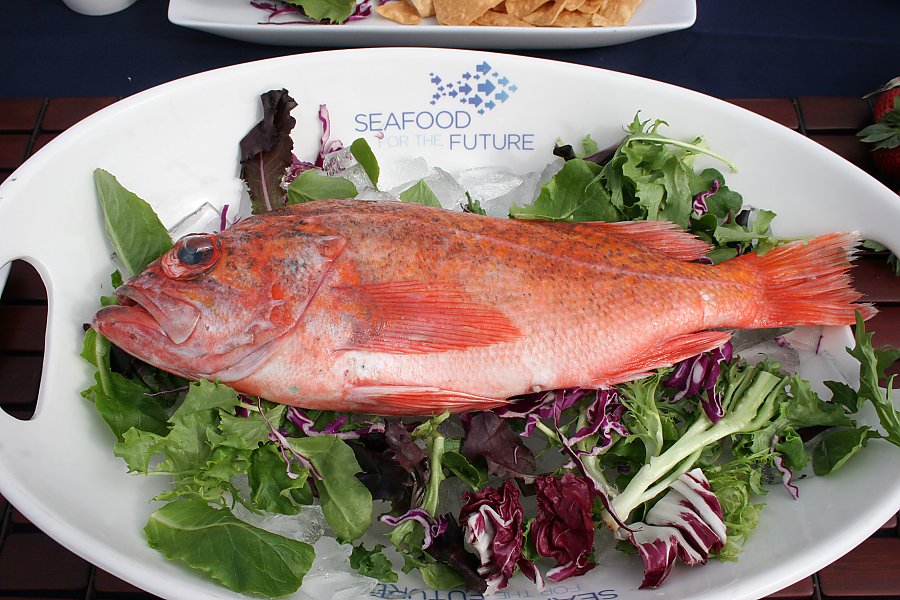Making Responsible Seafood Choices
There is more to making responsible seafood choices than, “which fish should I eat?”

Grilled oysters with BBQ chipotle butter. Credit: Hog Island Oyster Company
Seafood for the Future recognizes that there is no one-size-fits-all solution. We encourage a balanced sourcing approach that includes:
Responsible aquaculture Wild-capture fisheries harvests have leveled off. The latest data indicates that 90 percent of global fisheries are harvested at or over their maximum sustainable yields. Aquaculture production now provides more than half of the global seafood supply. Responsible aquaculture is essential to balance the need for more healthy seafood protein and reducing pressure on wild stocks.
Well-managed wild-capture fisheries The U.S. is widely recognized for having some of the best managed fisheries in the world, yet we continue to import most of our seafood. Some of these imports come from countries that don’t regulate fishing and farming practices with the same rigor and proven science-based management implemented in the U.S. We must recognize and support the efforts of the fishermen, government agencies, and nongovernment organizations involved in improving our fisheries resources, both domestically and abroad and work with them to continue to improve and strengthen their efforts to provide responsibly harvested seafood while further reducing their impacts.
Responsibly sourced imports We live in a global economy. Imports will continue to play a critical role in a healthy and balanced seafood supply. It is essential to balance a well-managed domestic wild-capture and responsible aquaculture supply with responsibly sourced imports, both farmed and wild.

Tips for supporting an environmentally responsible seafood supply
Buy U.S. seafood
U.S. seafood is among the best-managed in the world. Buying local supports environmentally responsible fishing and farming practices and local coastal communities. It can also reduce the risk of seafood fraud, as it is much easier to trace local seafood products.
Here’s a list of fishermen’s markets in California where you can buy direct from the fishermen.
Try something new
Shrimp, tuna, and salmon are the top-consumed seafood items in the U.S. While there are responsible options for all of these choices, we need to diversify our demand to support a balanced seafood supply.
Look for certified seafood products
Can’t find a U.S. product to meet your needs? Look for products certified by credible 3rd party certifiers like the Marine Stewardship Council, Aquaculture Stewardship Council, and the Global Seafood Alliance’s Best Seafood Practices & Best Aquaculture Practices.
Support businesses with transparent sourcing strategies
There are many businesses and restaurants working with government and nongovernment agencies and other stakeholder groups to improve the seafood supply chain. Look for businesses with sourcing strategies that are publicly available and developed with diverse stakeholder groups, including government and nongovernment organizations.
Find restaurants and businesses that are participating in sustainable seafood programs at: FishChoice.com

Additional Resources
Certifications
- Aquaculture Stewardship Council (ASC)
- Global Seafood Alliance’s Best Aquaculture Practices (BAP) (must be 2 star or higher) or Best Seafood Practices (BSP)
- Marine Stewardship Council (MSC)
- NOAA FishWatch
- Seafood Watch (Monterey Bay Aquarium)
Fishery and Aquaculture Improvement Projects
- Conservation Alliance for Seafood Solutions – Guidelines for Supporting FIPs
- FisheryProgress.org
- Sustainable Fisheries Partnership
Traceability
- FishWise – Traceability and IUU
- Future of Fish – Traceability 101 Toolkit
- WWF – Traceability Principles for Wild-Caught Fish Products

